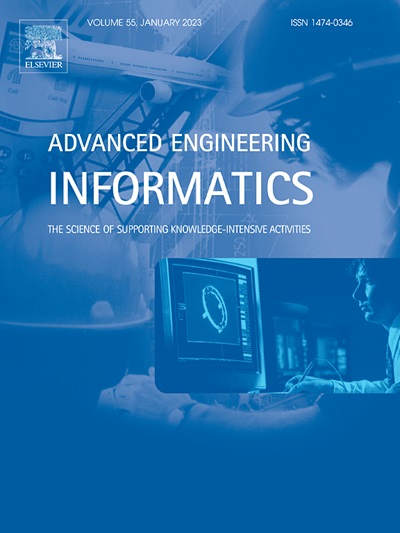基于cels - woa叠加的可解释震害预测模型
IF 9.9
1区 工程技术
Q1 COMPUTER SCIENCE, ARTIFICIAL INTELLIGENCE
引用次数: 0
摘要
快速、准确地评估震后建筑物的损坏,对于有效的应急响应和恢复至关重要。本研究旨在为地震灾害情景下的知识导向决策提供支持,并探讨影响因素与震害之间的关系。基于尼泊尔地震灾害数据库(NBDP),我们开发了一种混合地震灾害预测模型,该模型结合了集成堆叠框架和改进的优化算法(chaotic - lsamvy Elite-enhanced whale optimization algorithm, CELS-WOA)。为了解决资源受限的灾后环境中的模型复杂性,我们采用委员会投票的方式进行特征选择,并使用Shapley加性解释(SHAP)量化每个变量的贡献。结果表明,该模型在各种优化策略下均优于单一模型和传统集成方法,预测精度达到0.904。此外,结合地震烈度信息分析了区域变量的SHAP值,揭示了地震烈度通过地理空间属性编码的潜在机制。影响地震破坏的关键指标包括震前/震后建筑高度/楼层、地理位置、建筑年龄和泥石材料使用情况。其中,建筑高度/楼层直接反映震害,地理位置通过隐伏的地震烈度影响震害。建筑龄期和泥石材料通过反映其自身的抗振能力来影响建筑物的破坏程度。本研究明确了基于机器学习的影响因素对建筑物地震损失的影响,为地震灾害场景的智能损失评估提供了依据。本文章由计算机程序翻译,如有差异,请以英文原文为准。

Explainable seismic damage prediction model based on CELS-WOA-Stacking
Rapid and accurate assessment of post-earthquake building damage is crucial for effective emergency response and recovery. This study aims to enable knowledge-guided decision support in seismic disaster scenarios and to examine the relationships between influencing factors and seismic damage. Based on the Nepal Earthquake Damage Database (NBDP), we developed a hybrid earthquake damage prediction model that combines an integrated stacking framework with an improved whale optimization algorithm (Chaotic-Lévy Elite-enhanced Whale Optimization Algorithm, CELS-WOA). To address model complexity in resource-constrained post-disaster environments, we employed committee voting for feature selection and quantified the contribution of each variable using Shapley Additive Explanations (SHAP). The results demonstrate that our model outperforms single models and traditional ensemble approaches under various optimization strategies, achieving a prediction accuracy of 0.904. Additionally, we analyzed the SHAP values of regional variables in conjunction with seismic intensity information, uncovering latent mechanisms of seismic intensity encoding through geospatial attributes. Key indicators affecting seismic damage include pre/post-earthquake building height/floors, geographic location, construction age, and mud-stone material usage. Specifically, building height/floors directly reflect damage, while geographic location influences damage through hidden earthquake intensity. Construction age and mud-stone material influence the damage of the building by reflecting their own ability to resist vibration. This study clarifies the impact of influencing factors on the earthquake loss of buildings based on machine learning, which provides a basis for intelligent loss assessment for earthquake disaster scenarios.
求助全文
通过发布文献求助,成功后即可免费获取论文全文。
去求助
来源期刊

Advanced Engineering Informatics
工程技术-工程:综合
CiteScore
12.40
自引率
18.20%
发文量
292
审稿时长
45 days
期刊介绍:
Advanced Engineering Informatics is an international Journal that solicits research papers with an emphasis on 'knowledge' and 'engineering applications'. The Journal seeks original papers that report progress in applying methods of engineering informatics. These papers should have engineering relevance and help provide a scientific base for more reliable, spontaneous, and creative engineering decision-making. Additionally, papers should demonstrate the science of supporting knowledge-intensive engineering tasks and validate the generality, power, and scalability of new methods through rigorous evaluation, preferably both qualitatively and quantitatively. Abstracting and indexing for Advanced Engineering Informatics include Science Citation Index Expanded, Scopus and INSPEC.
 求助内容:
求助内容: 应助结果提醒方式:
应助结果提醒方式:


